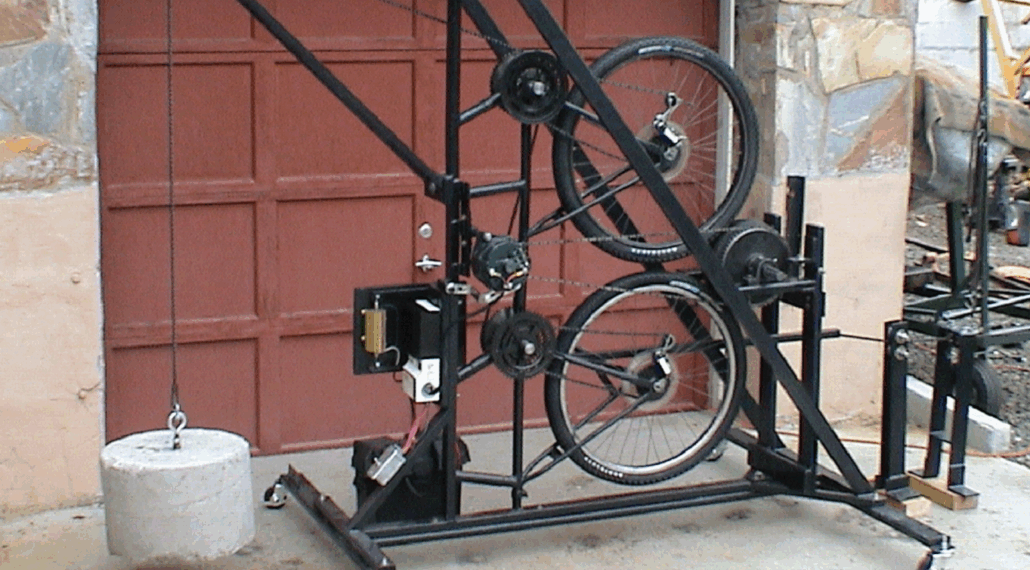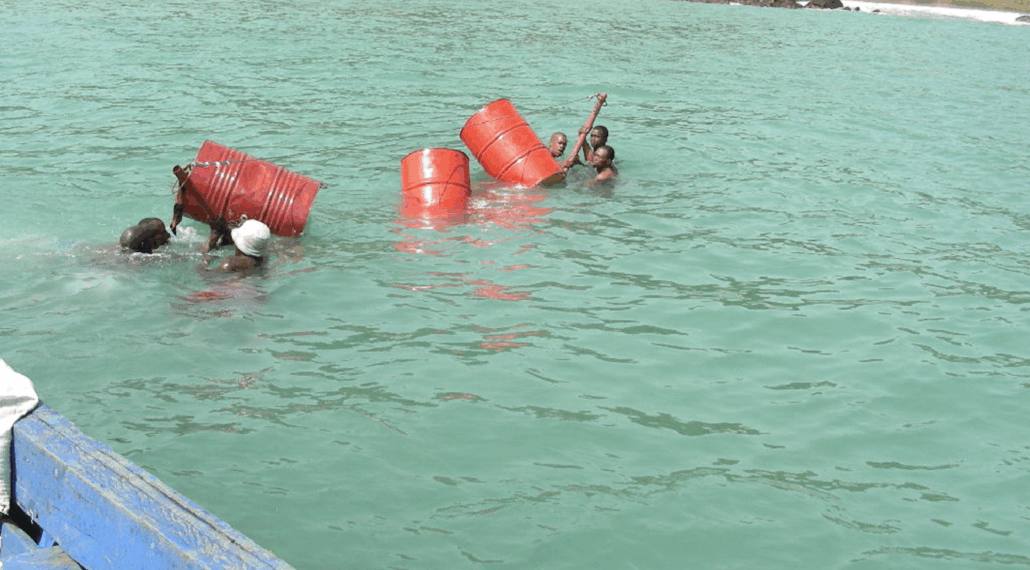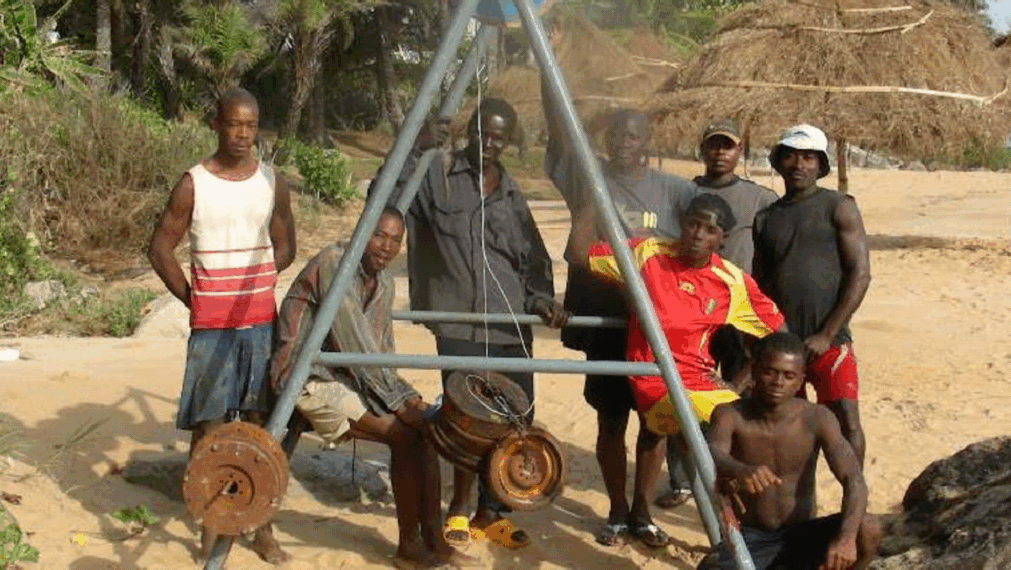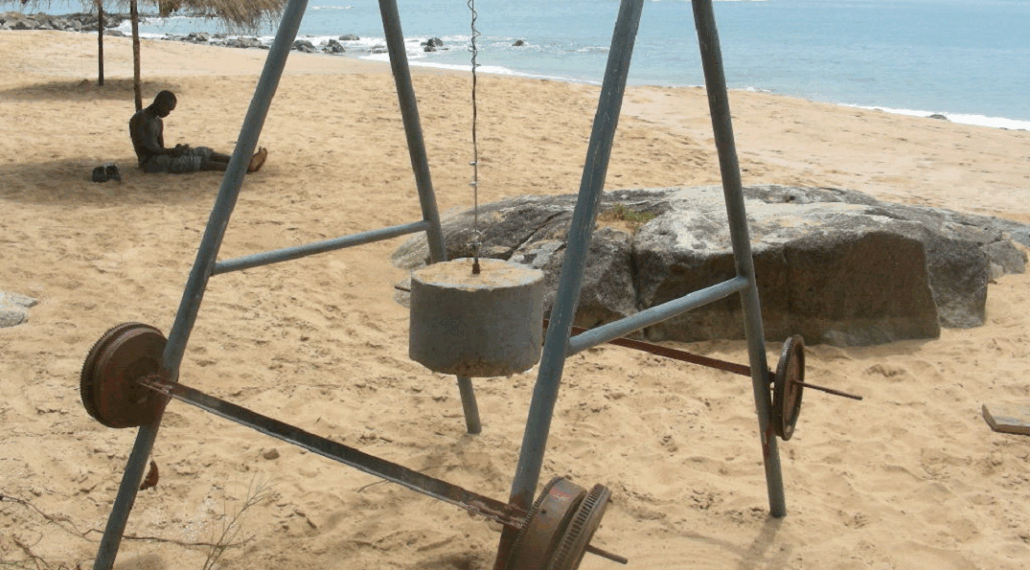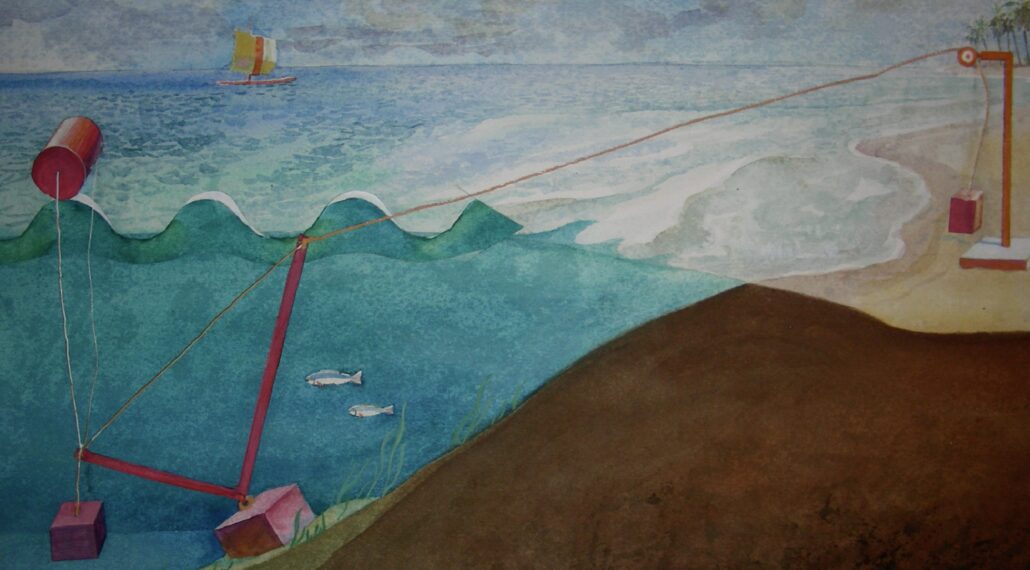Capturing the power and energy of hydro-kinetic energy from ocean waves (also known as ocean wave energy conversion, or OWEC) with inexpensive steel cable technology that can survive storms
HISTORY OF THE CONCEPT
The first attempt was done on a beach near Puerto Quetzal, Guatemala, 1996.
The goal of sustainable energy services is to transition from traditional, fossil fuel-based energy sources to renewable energy sources, such as solar, wind, hydro, geothermal, and biomass.
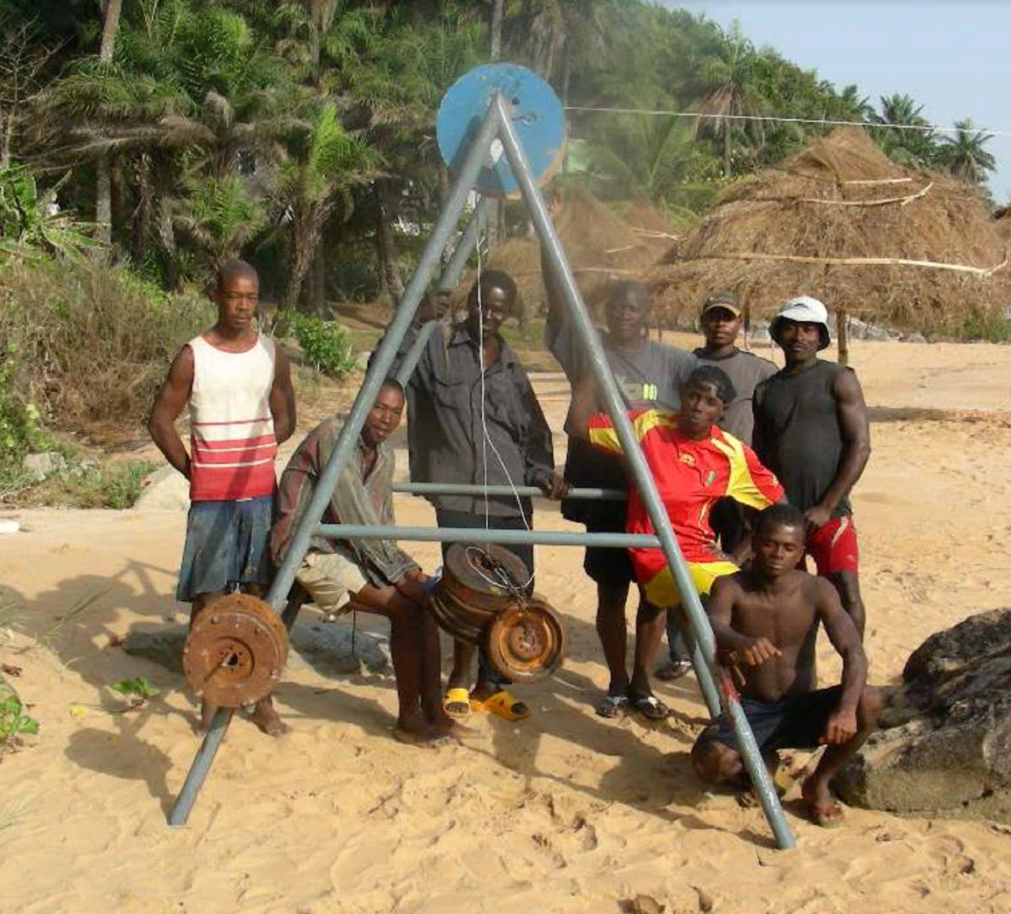
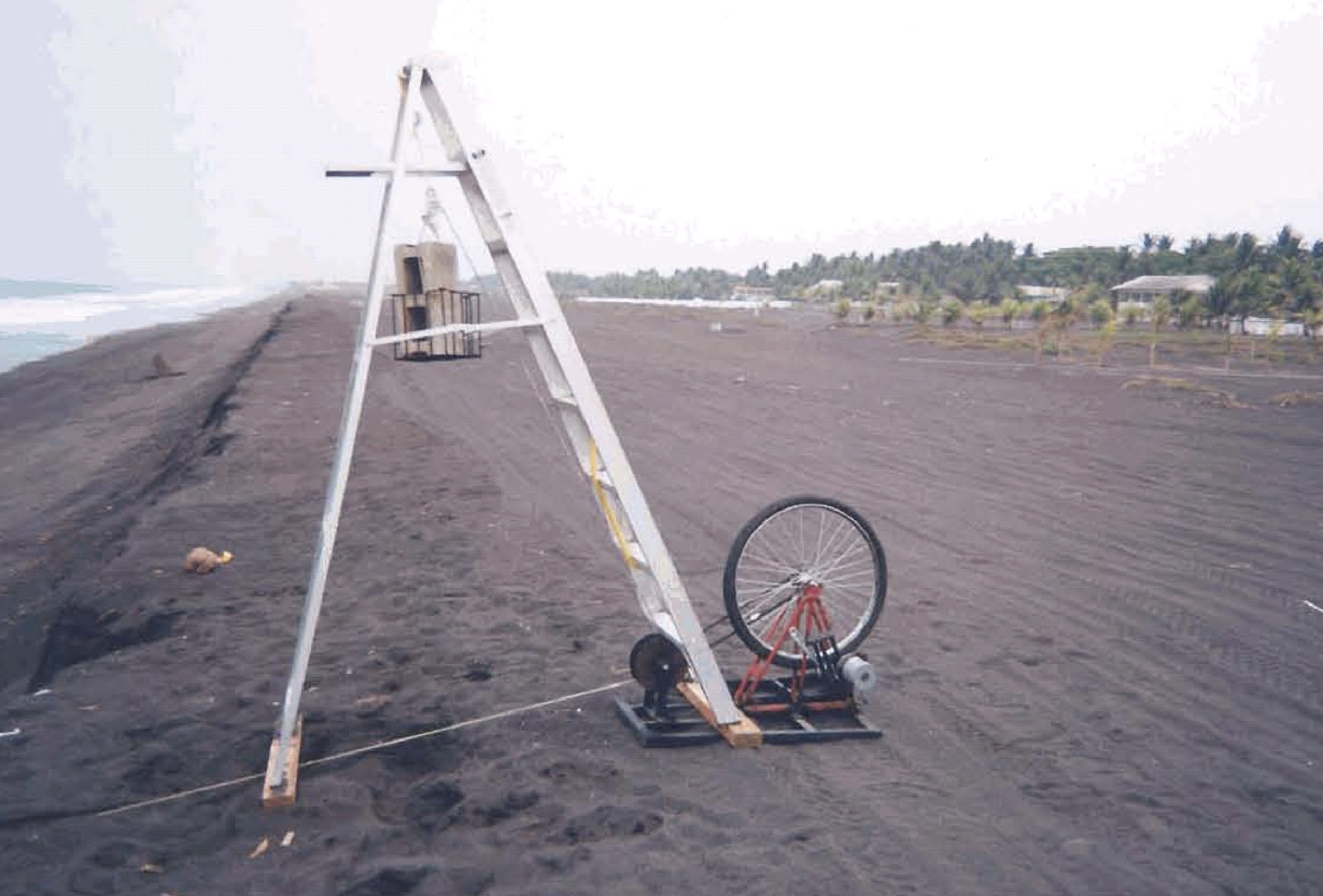
The cable extended about 200 yards into the surf, beyond the beakers, and ran first through a pulley attached to an engine block, and then up to a submerged, upside-down hammock with an inflated truck inner tube serving as a float. The small 24-volt DC motor spun by the bicycle tire would light up two small lights for about 3 seconds with each wave. Eventually the friction of the pulley wore through the cable.

Initial artist’s conception of device eventually deployed in Guinea. The weight below the barrel is heavier than the weight on shore, so that force can be captured onshore regardless of whether the barrel is falling or rising on the waves..
The first water unit was lost in deep water
First attempt for both the water and beach portions of the unit in Guinea. See video for explanation.
Second attempt for the water unit deployed in Guinea. The larger basked was filled with sandbags to provide a stable anchor at the bottom, over which the arm unit (one end is not visible in the picture) would rotate.
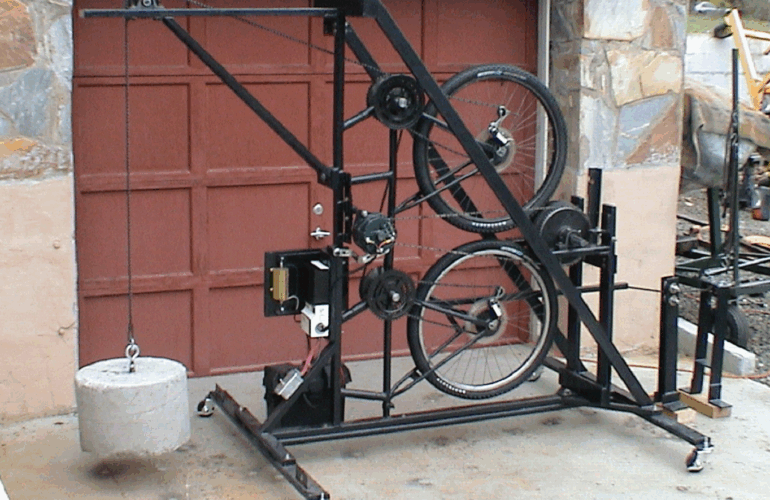
Installed Generator
This was the Guinea shore unit which the inventor shipped from Virginia to Conakry in 2008.
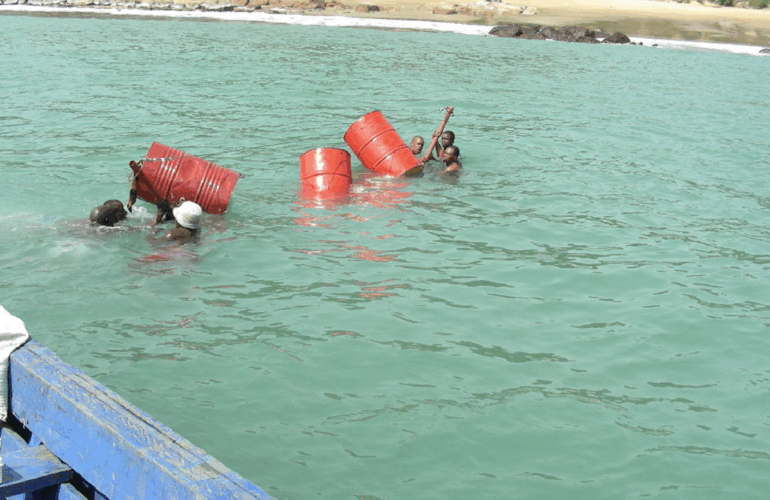
Installing the Underwater Portion
Launching the second water unit in Guinea, February 2009
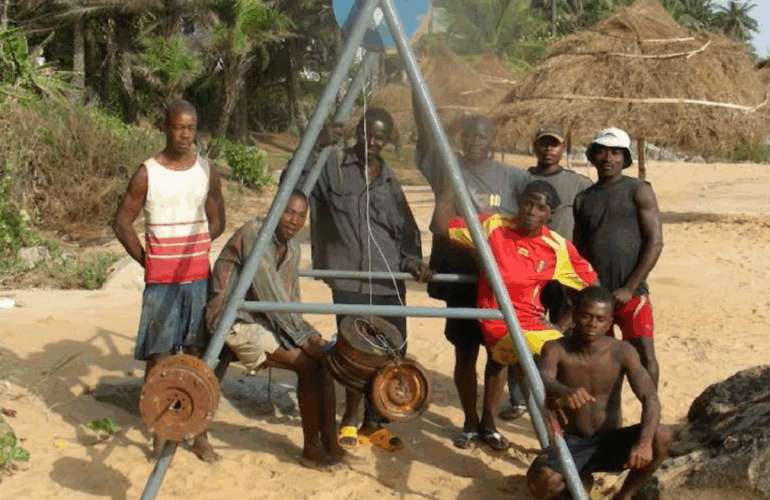
Energy Transfer to Shore from Ocean Waves
Launching the second water unit in Guinea, February 2009.
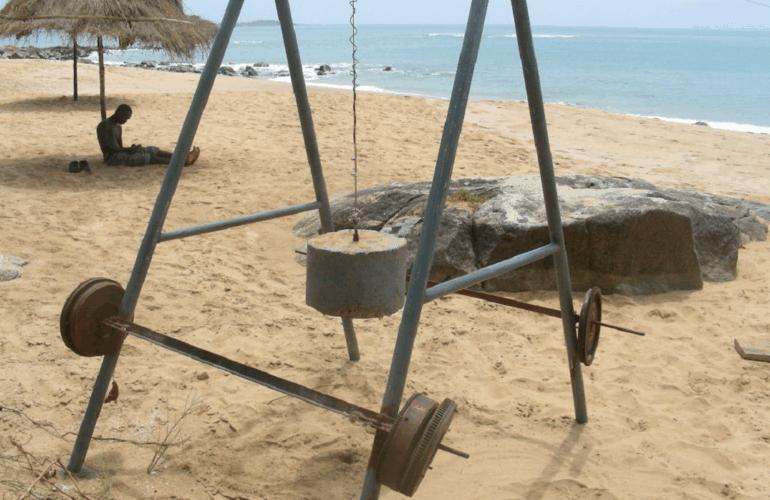
Ocean Wave Energy conversion or transfer via cable to shore
These were the first and second shore units in Guinea
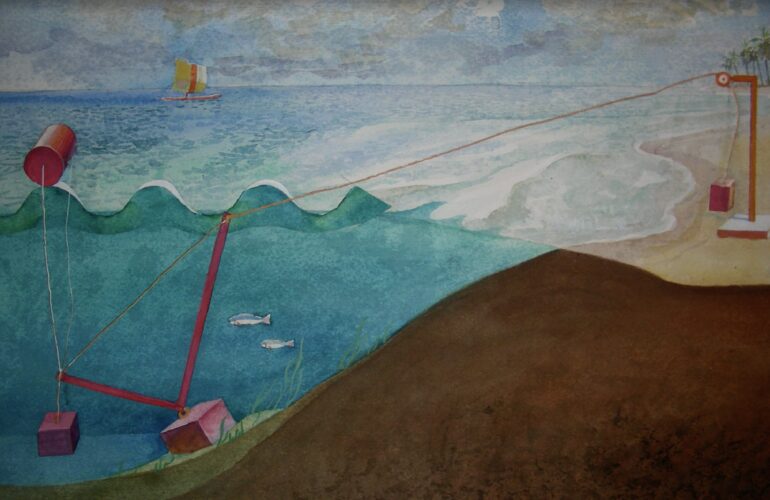
Real Example, starting with artist’s rendering to show underwater portion
Real Example, starting with artist’s rendering to show underwater portion

